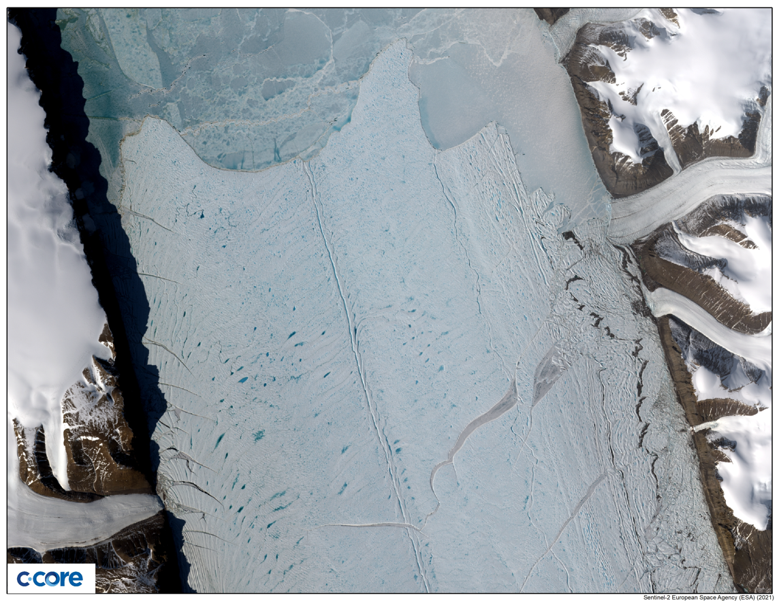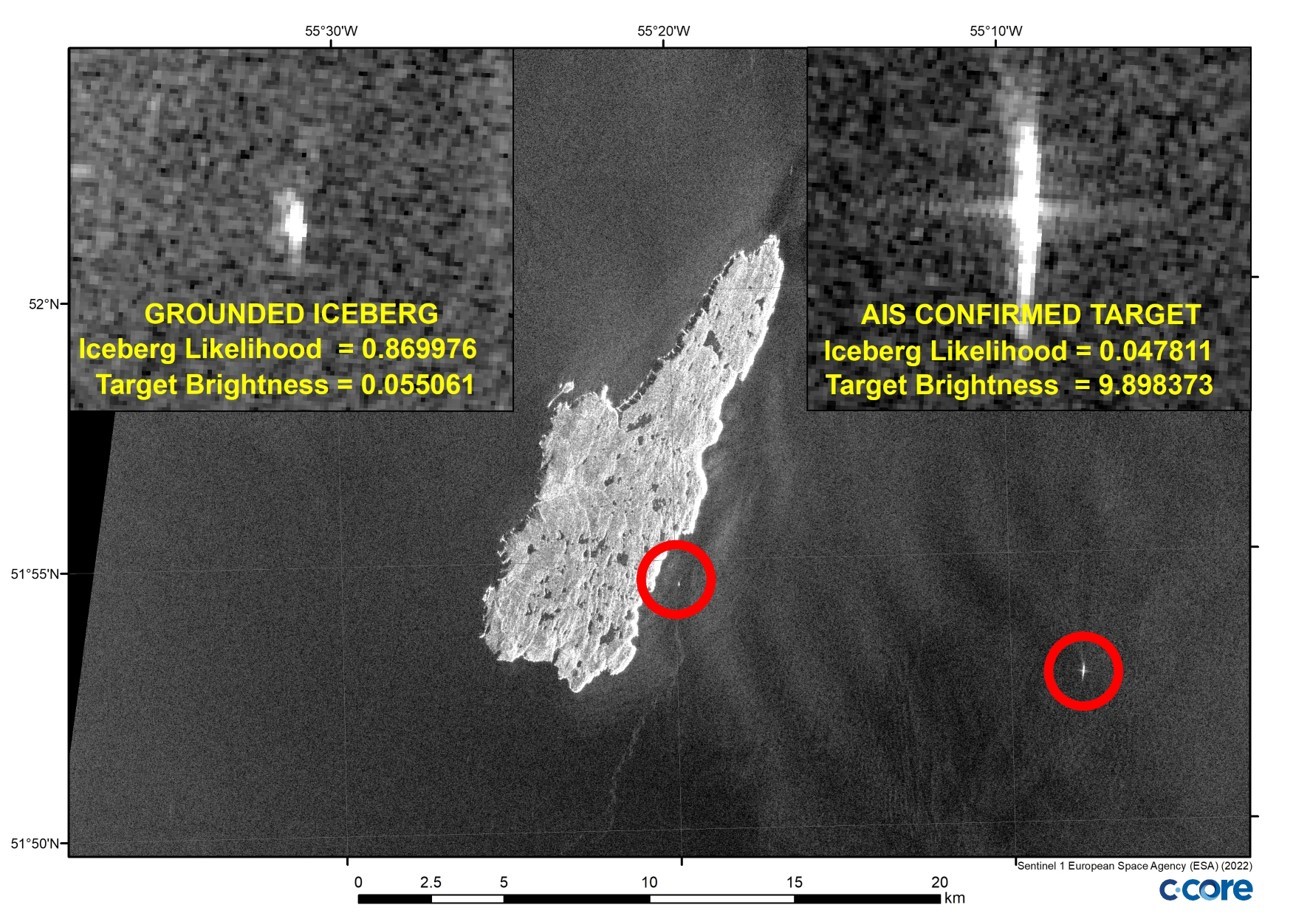C-CORE has been actively researching marine target detection for almost three decades. The work has been focused on iceberg detection, and clients have included oil and gas companies with interests on the East Coast of Canada, offshore Greenland, and Northern Russia. Canada’s Department of National Defence (DND) has been interested in optimizing vessel detection algorithms, minimizing false alarms, and advancing ship and iceberg discrimination. Research includes:
- Investigating detection approaches
- C-CORE does not own or operate its own satellites and aims to work with the best satellites for each application. Over the past few years, there has been an explosion of new satellite sensors and C-CORE has been evaluating which ones are suitable for marine monitoring. Sensors supported include satellite synthetic aperture radar (SAR) at different operating frequencies and polarizations, and multispectral optical data. Based on C-CORE’s understanding of how radar parameters and environmental conditions affect detection potential, C-CORE has developed confidence maps that indicate the suitability of each portion of an image for target detection and worked on automatically detecting other features such as ridges and rubble fields.
- Characterizing homogeneous and inhomogeneous sea clutter
- Threshold-based target detection uses the contrast between the target and the surrounding ocean for detection. Threshold-based detection methods are preferred in some cases as it’s possible to assess the false alarm potential, and C-CORE has researched how to accurately model the scatter from the ocean surface. One challenge with threshold-based methods is that the scatter is often inhomogeneous and standard models do not apply. C-CORE has investigated alternate approaches for modeling the ocean, which are useful for target detection when atmospheric fronts or other features are part of the clutter.
- Detecting icebergs in sea ice


